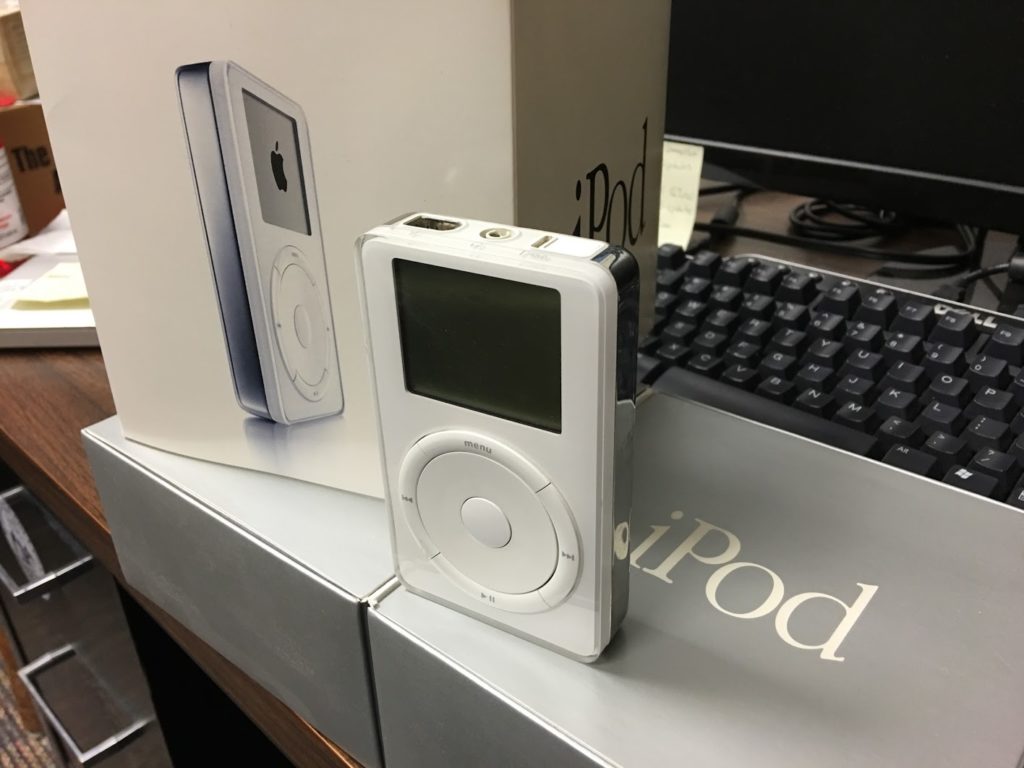I’ve had a long history with the iPod. My first was a 5GB, Macintosh-formatted, first-generation iPod with a Firewire interface. The battery wasn’t very good, and those models had a bad habit of breaking the Firewire plug, so it’s good that Apple figured things out with the later versions.

My next iPod was a 40GB Video model. Open box from Best Buy, it was probably still over $450 way back then, but man was it nice. I used it on planes, for a radio show, and in cars. I sold it later to get another one, an 80GB I think, then eventually got the mother of all iPods, the 160GB, in 2007. iPod Touch was next on the list, and I never really looked back when touch screens, wireless, and an App Store were available.

We didn’t realize it at the time, but those who were fascinated with the iPod and audio quality became fans of the device because it used various versions of the Wolfson DAC. Other sites have ranked the best iPods for sound, but all of them are before the 6th Generation iPod, which seemed to be a turn in form from Cupertino towards profit over quality.
Most iPods that weren’t flash based had actual hard drives, 1.8″ units from many manufacturers. Larger iPods sometimes had deeper cases to acommodate the thicker hard drives. 160GB seemed like a lot, and it is, but hard drives have many deficiencies to flash storage in 2019. Along with drive capacity, the amount of RAM onboard also varied, so a 30GB and 60GB iPod would have different total track and metadata capacities. Fun!
A friend mentioned off hand that he had a bunch of iPods. He wasn’t interested in them, and so they were just simply available if you wanted them. I took him up on the offer, and three of the four happened to be custom etched iPod 30GB 5G units. They may be 5.5, but the awkward part number doesn’t make it clear. Regardless, I was now in possession of some great hardware with weak batteries and failing hard drives.

To go with that aforementioned Wolfson DAC, I bought a used set of Etymotic ER-4B in-ear monitors for serious sound isolation. These were to get an awesome experience by blocking out as much noise as possible, while giving me a powerful, high-quality, balanced sound. The iPod featured a relatively powerful amplifier, and I was surprised at how well it drives the ER 4s.
Storage has been solved by one company in particular. They offer a 1-, 2-, and 4- SD card upgrade option that replaced the hard disk with a PCB housing one to four cards. An mSATA option, and CF are also available if you so desire. The PCBs are frequently in stock and ship from the UK. It can take a few weeks, and I’d probably recommend the shipping option with a tracking number too.

So, I ordered the iFlash Dual, a 128GB, 80MB/sec SD card, a replacement battery, and some tools. One after another, they showed up and piled around the iPod. The adapter arrived last, fashionably, which let me put everything together in a matter of minutes. See, I’d already done the hard part…

Getting the iPod open is tedious, but needs care. I followed a guide on the iFlash website, another two on YouTube, and yet another on the iFixit site. The latter, especially, let me to the best sequence of working the back cover off that I’d seen. With a single spudger and an old credit card, I was able to get the rear cover off in minutes without breaking anything or bending it up. What a relief!

Hard disk removal was simple and easy. Battery was a little trickier with the adhesive, but a patient prying motion along the long axis of the battery got it out in no time. That done, everything was pretty much the opposite of removal.
Put the SD card(s) in the PCB. Check. Get the PCB lined up, with the SD card facing DOWN. Check. Slide the drive cable in the slot and lock it down. Check. Battery leads bent down at the end and re-attached. Check.
I did have a foible with the drive connector, so I had to do it again, but the second time of asking, the iPod booted up. iTunes restored the iPod, and I’ve synced over 11,000 tracks to a nearly full iPod that now has 128GB of capacity.

Total cost was under $100. It helps that the iPod was no charge. Batteries are inexpensive, and SD storage per gigabyte gets more inexpensive every week. The most expensive items was the SD adapter, but it’s also the most important!.
The sound is very clear, even at 80% volume. The menus are SUPER fast. I’m looking forward to better battery life, quieter operation, and more than four times the capacity.
Would I recommend this? Only if you have an iPod 4th or 5th generation available for cheap/free/in a drawer. I would hesitate to do this on the 6G or 7G unless you’re simply interested in carrying a HUGE amount of music with you and are less concerned about subjective quality.
iFlash Dual – $40 : from iFlash.xyz directly
128GB Sandisk SD card – $22 – Amazon
Lenmar iPod battery – $11 – Amazon